[GUIDE] How Long To Cook 3lb Beef Roast In Oven
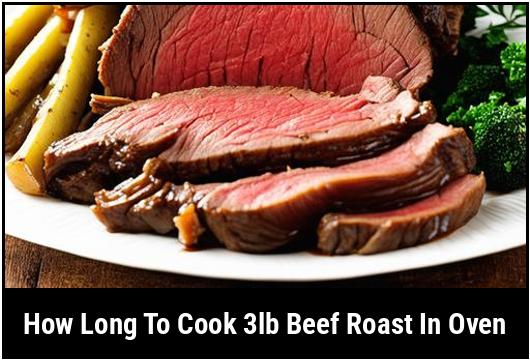
Cooking a beef roast in the oven is a timeless classic that can produce a tender and flavorful dish. However, getting the cooking time just right can be a challenge, especially if you’re cooking a 3lb beef roast. In this article, we will explore the ideal cooking time and temperature for a 3lb beef roast and provide you with tips to ensure a perfectly cooked roast every time.
Quick Answer: How Long To Cook A 3lb Beef Roast In The Oven
Cooking times for beef roasts vary depending on factors such as the desired level of doneness, the type of roast, and the cooking temperature. As a general guideline, a 3lb beef roast cooked in the oven should be cooked at 325°F (163°C) and cooked for approximately 20 minutes per pound. Therefore, a 3lb beef roast would take around 60 minutes to cook to medium-rare or about 75 minutes for medium doneness.
It’s worth noting that these times are estimates, and the only way to ensure the roast is cooked to the desired level of doneness is by using a meat thermometer. Refer to the section on monitoring and troubleshooting for more information on using a meat thermometer.
Key Takeaways
- A 3lb beef roast should be cooked at a temperature of 325°F (163°C).
- As a general guideline, cook the beef roast for approximately 20 minutes per pound.
- Using a meat thermometer is the most accurate way to determine the roast’s doneness.
The Science Of Cooking Beef Roast
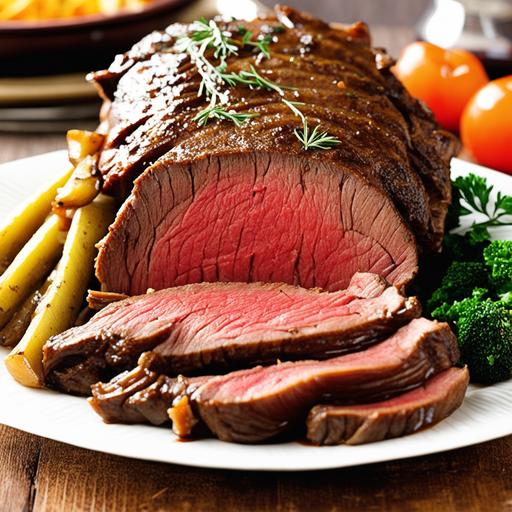
Cooking a beef roast involves the application of heat, which causes various chemical reactions in the meat. These reactions contribute to the changes in texture, flavor, and color of the roast.
When the beef roast is cooked at a relatively low temperature, the proteins in the meat denature, leading to a tenderized texture. Additionally, fat within the roast starts to melt, adding moisture and flavor, while the connective tissue gradually breaks down, resulting in a more succulent and tender roast.
The internal temperature of the beef roast is crucial in achieving the desired level of doneness. Different levels of doneness are achieved at different internal temperatures, ranging from rare to well done. It is essential to cook the roast to the desired temperature while ensuring food safety.
Choosing A Beef Roast
When selecting a beef roast for cooking, consider marbling and size. Marbling refers to the dispersion of fat throughout the meat, which adds tenderness, juiciness, and flavor. Look for a roast with good marbling, as it will enhance the overall taste and texture of the final dish.
Size is another important factor to consider. A 3lb beef roast is an excellent size for serving a small family or a few guests. It’s important to note that the larger the roast, the longer it will take to cook. Adjust cooking times accordingly when dealing with larger or smaller roast sizes.
Common types of beef roasts include rib roast, sirloin roast, tenderloin roast, and chuck roast. Each type has its own unique characteristics and flavors. Choose the type that suits your preferences and the occasion.
Preparing The Beef Roast
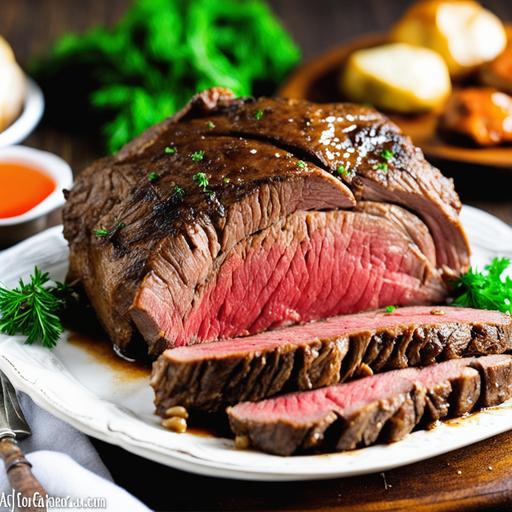
Before cooking, there are a few important steps to take in preparing the beef roast:
-
Bring the beef roast to room temperature: Take the roast out of the refrigerator and let it sit at room temperature for about 30 minutes to an hour. This allows the meat to cook more evenly.
-
Season the beef roast: Season the beef roast with your preferred spices and seasonings. A simple seasoning of salt, pepper, and garlic powder works well, or you can experiment with different herb rubs or marinades.
-
Trim excess fat: If desired, trim any excessive fat from the beef roast. Leaving some fat can provide flavor and moisture during cooking, but too much fat might result in a greasy final dish.
Ideal Cooking Temperature For Beef Roast
The recommended cooking temperature for a 3lb beef roast is 325°F (163°C). This temperature allows the roast to cook gently and evenly while maintaining its tenderness and flavor.
Cooking the roast at a higher temperature can cause the outer layers of the meat to dry out, resulting in a less desirable texture. On the other hand, cooking at a lower temperature may take longer to achieve the desired level of doneness.
Beef Roast Cooking Time

As a general guideline, a 3lb beef roast should be cooked for approximately 20 minutes per pound. This estimate assumes a cooking temperature of 325°F (163°C).
Therefore, a 3lb beef roast would take around 60 minutes to cook to medium-rare (internal temperature of 135°F or 57°C) or about 75 minutes for medium doneness (internal temperature of 145°F or 63°C).
However, it’s important to note that these times are just estimates, and the only way to ensure the roast is cooked to the desired level of doneness is by using a meat thermometer.
Cooking Techniques
There are several cooking techniques that can be used to cook a 3lb beef roast in the oven. Some common techniques include:
-
Dry-roasting: This is the most basic and common method of cooking a beef roast. The seasoned roast is placed directly on a roasting rack in a preheated oven. The heat circulates evenly around the roast, resulting in a well-cooked and flavorful dish.
-
Braising: Braising involves searing the roast in a pan to develop a brown crust before transferring it to a covered pot with broth or other liquid. The roast is then cooked in the oven at a low temperature for an extended period. This technique is especially suitable for tougher cuts of meat, as the slow cooking tenderizes them.
-
Rotisserie: Using a rotisserie attachment on your oven or grill can yield a beautifully cooked and evenly browned beef roast. The rotisserie allows for even browning and self-basting as the roast rotates, resulting in a succulent and flavorful dish.
-
Searing and oven-finishing: This method involves searing the roast in a hot skillet to develop a crust before transferring it to the oven to finish cooking. Searing helps to lock in the juices and enhances the flavor of the roast.
Monitoring And Troubleshooting
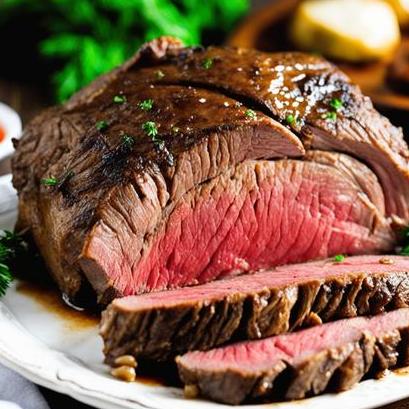
To ensure that your 3lb beef roast is cooked to perfection, it’s essential to monitor its internal temperature using a meat thermometer. Insert the thermometer into the thickest part of the roast, avoiding any bones or excessive fat.
Here are some general guidelines for the internal temperature of the roast at different levels of doneness:
- Rare: 125°F (52°C)
- Medium-rare: 135°F (57°C)
- Medium: 145°F (63°C)
- Medium-well: 155°F (68°C)
- Well-done: 160°F (71°C) or higher
Keep in mind that the internal temperature will rise a few degrees after the roast is removed from the oven due to carryover cooking. It’s best to remove the roast from the oven a few degrees below the desired final temperature and allow it to rest for about 10-15 minutes before slicing. This resting period allows the juices to redistribute, resulting in a juicier and more tender roast.
If the beef roast is not reaching the desired temperature within the estimated cooking time, you may need to adjust the oven temperature slightly higher or lower or give it more time to cook. Every oven is different, so it’s essential to be flexible and adapt to your specific circumstances.
Beef Roast Cooking Instructions
Here is a step-by-step guide on how to cook a 3lb beef roast in the oven:
- Preheat the oven to 325°F (163°C).
- Remove the beef roast from the refrigerator and let it sit at room temperature for 30 minutes to an hour.
- Season the roast with salt, pepper, and any desired spices or seasonings.
- Place the seasoned roast on a roasting rack in a roasting pan.
- Insert a meat thermometer into the thickest part of the roast, avoiding any bones or excessive fat.
- Place the roasting pan in the preheated oven and cook for approximately 20 minutes per pound or until the desired internal temperature is reached.
- Once the roast has reached the desired temperature, remove it from the oven and let it rest for 10-15 minutes.
- Carve the roast against the grain into thin slices and serve.
Variations
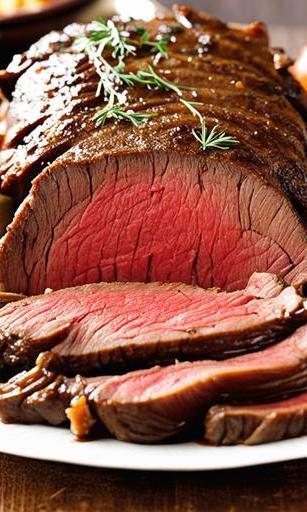
There are numerous ways to add variety and experiment with flavors when cooking a 3lb beef roast. Here are a few variations to consider:
-
Garlic and Herb Roast: Rub the roast with a mixture of garlic, fresh herbs (such as rosemary, thyme, and parsley), salt, and pepper before cooking. This will infuse the roast with aromatic flavors.
-
Mustard and Soy Glazed Roast: Create a glaze using Dijon mustard, soy sauce, honey, and minced garlic. Apply the glaze to the roast before cooking to add a tangy and sweet flavor.
-
Spiced Rub Roast: Create a spice rub using a combination of your favorite spices such as chili powder, paprika, cumin, coriander, and black pepper. Massage the spice rub into the roast before cooking for a flavorful and mildly spicy dish.
-
Asian-inspired Roast: Marinate the beef roast in a mixture of soy sauce, ginger, garlic, and sesame oil for a few hours or overnight before cooking. This will infuse the roast with delicious Asian flavors.
Feel free to experiment with different flavors and seasonings to create your signature beef roast.
When Things Go Wrong
Even with careful planning, sometimes things don’t go according to plan in the kitchen. Here are some common issues that can arise when cooking a beef roast and how to troubleshoot them:
-
Roast is too dry: If the roast turns out dry, it may have been overcooked. To prevent this, ensure that you are monitoring the internal temperature accurately and removing the roast from the oven when it reaches the desired doneness. Consider basting the roast with pan drippings or broth during cooking to add moisture.
-
Roast is undercooked: If the roast is undercooked, it may not have reached the desired internal temperature. If this happens, return the roast to the oven and continue cooking until the desired temperature is reached. Check the internal temperature at intervals to avoid overcooking.
-
Seasoning is bland: If the seasoning of the roast is bland, consider adding more salt, pepper, or additional herbs and spices to enhance the flavor. You can also serve the roast with a flavorful sauce or gravy to complement the taste.
-
Uneven cooking: Uneven cooking can occur if the roast is not of uniform thickness or if the oven temperature is not consistent. To prevent this, choose a roast that is relatively uniform in thickness. If your oven has hotspots, rotate the roast during cooking or use a convection oven for more even heat distribution.
Serving Beef Roast
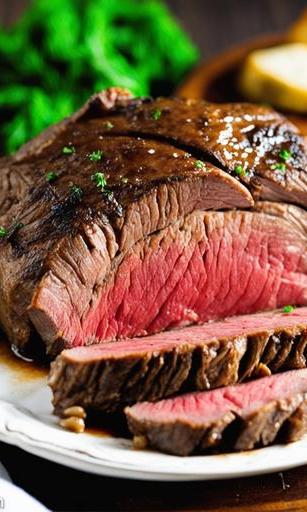
After cooking your 3lb beef roast to perfection, it’s time to serve it and enjoy the delicious results. Here are a few serving suggestions:
-
Slice against the grain: When carving the roast, it’s essential to slice against the grain. This creates more tender and bite-sized pieces.
-
Gravy or sauce: Serve the beef roast with a flavorful gravy or sauce made from the pan drippings. A red wine reduction, mushroom sauce, or horseradish sauce are popular choices.
-
Accompaniments: Pair the beef roast with delicious sides such as roasted vegetables, mashed potatoes, Yorkshire pudding, or a fresh salad. These sides provide a balanced and satisfying meal.
-
Leftovers: If you have leftovers, store them in the refrigerator in an airtight container. Leftover beef roast can be used in sandwiches, salads, tacos, or stir-fries for future meals.
Best Practices For Beef Roast Cooking
To ensure the best results when cooking a 3lb beef roast in the oven, consider the following best practices:
- Use a meat thermometer to monitor the internal temperature of the roast for accuracy.
- Let the beef roast come to room temperature before cooking to ensure even cooking.
- Season the roast generously for enhanced flavor.
- Consider using a roasting rack to elevate the roast and allow for even heat circulation.
- Always allow the beef roast to rest for 10-15 minutes before carving to retain juiciness.
- Experiment with different flavors and seasonings to personalize your beef roast.
Conclusion
Cooking a 3lb beef roast in the oven is a delicious and satisfying meal. By following the recommended cooking times and temperatures, using a meat thermometer, and employing various cooking techniques, you can achieve the perfect cooked beef roast every time. Experiment with different flavors and seasonings to create a roast that suits your taste preferences, and don’t forget to enjoy the wonderful aroma and flavors that cooking a beef roast in the oven brings to your kitchen.
FAQS
What Is The Ideal Oven Temperature To Cook A 3lb Beef Roast?
The ideal oven temperature to cook a 3lb beef roast is 350°F for about 2.5-3 hours to achieve a juicy and tender roast.
Should I Cover The Beef Roast With Foil While Cooking?
Yes, it is recommended to cover the beef roast with foil for the first 1-2 hours of cooking to trap in the natural juices. This will ensure a tender and flavorful roast.
How Can I Check If The Beef Roast Is Done?
To check if the beef roast is done, use a meat thermometer and insert it into the thickest part of the roast. The internal temperature should reach 145°F for a medium-rare roast, 160°F for medium, and 170°F for well-done.
Can I Use Herbs And Spices To Flavor The Beef Roast While Cooking?
Yes, you can use various herbs and spices to flavor the beef roast such as rosemary, thyme, garlic, salt, pepper, and paprika. Simply rub the herb mixture onto the roast or add them to the cooking liquid for extra flavor.
Should I Let The Beef Roast Rest After Cooking?
Yes, it is recommended to let the beef roast rest for about 10-15 minutes after cooking to allow the juices to redistribute within the roast. This will result in a more flavorful and juicy roast.
Sources
About the Author Jenny
I'm Jenny, a housewife with an unwavering passion for food. My culinary journey began with my grandmother's kitchen, and it's now a full-fledged food blog. I've turned my love for cooking into a creative outlet, sharing recipes and stories with a global community of fellow food enthusiasts. It's proof that being a housewife can also mean pursuing your passions and savoring life's delectable moments.
